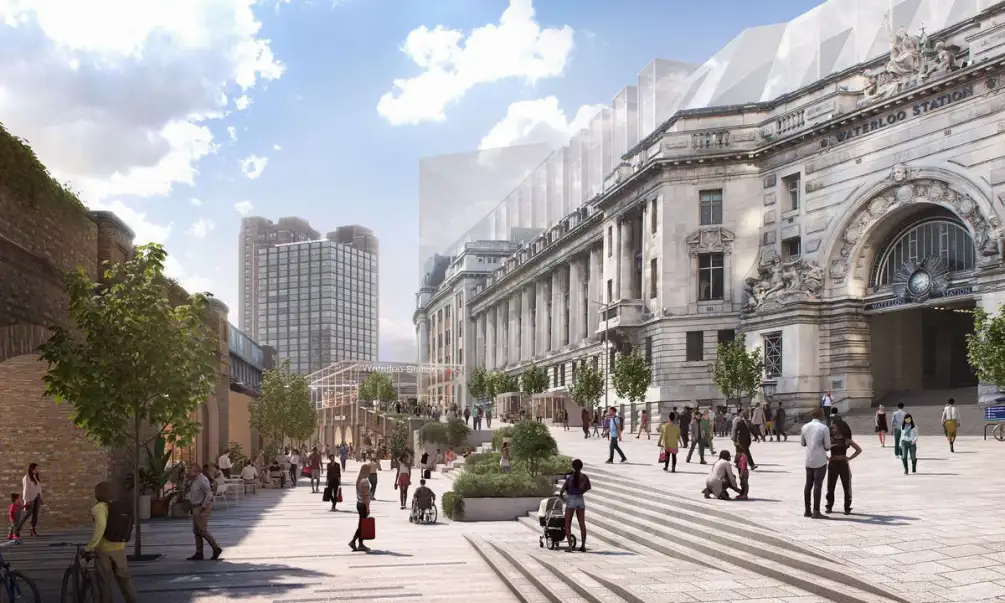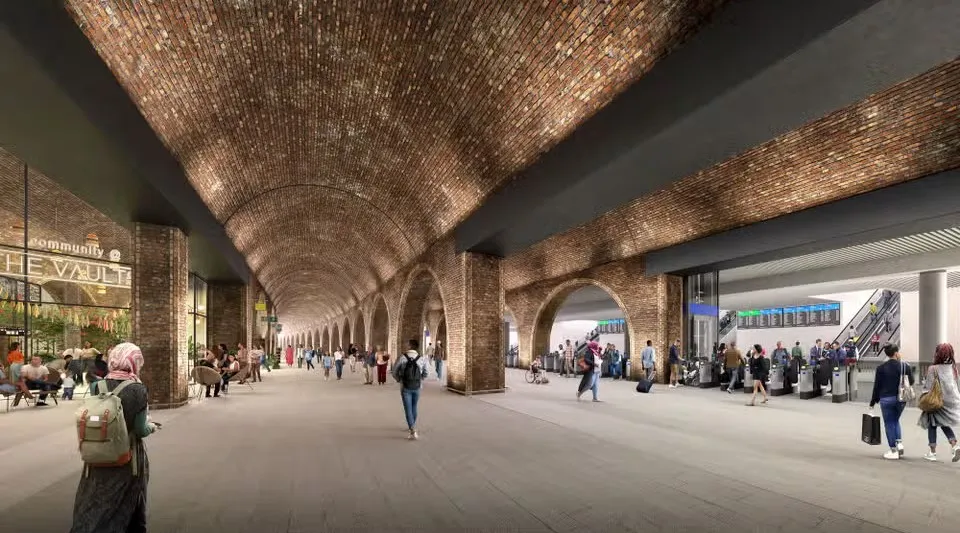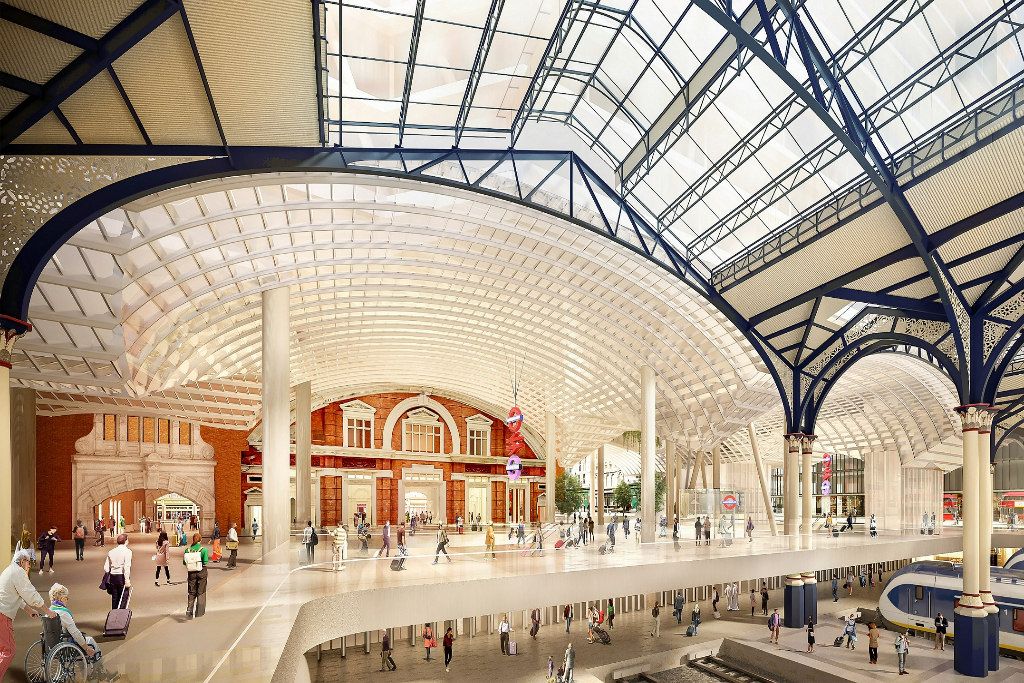News
Revitalizing London Waterloo: A Grand Vision for Transformative Urban Renewal
London Waterloo, a bustling hub in the heart of the British capital, is on the cusp of a monumental transformation. Proposals for an extensive renovation project have been unveiled, showcasing a visionary plan to reshape one of the UK’s busiest train stations. With new entrances, expanded concourses, and vibrant retail spaces earmarked for currently unused areas, the redevelopment aims to enhance the travel experience for the station’s staggering 57 million annual passengers. Let’s find out with nowglas.
This ambitious endeavor has garnered support from both Network Rail and Lambeth Council, ushering in a collaboration that envisions a station of the future. Spearheaded by the renowned architecture firm Grimshaw, the designs draw inspiration from the successful rejuvenation of London King’s Cross. Described as “future-proof,” the plans incorporate adaptive ideas to cater to potential future growth, ensuring that the station remains responsive and relevant.

The overarching goal of this redesign is to eliminate barriers within the 176-year-old station, creating an environment that prioritizes pedestrian accessibility. To fund this colossal project, designated areas for commercial development have been strategically integrated, signaling a holistic approach to urban revitalization. This innovative approach seeks to harmonize functionality with aesthetics, creating a space that not only serves its transportation purpose but also contributes to the cultural and economic vibrancy of the surrounding community.
Among the transformative ideas outlined in the proposal is the pedestrianization of Cab Road, introducing a “Victory Arch piazza” at the station’s main entrance. Additionally, a new entrance at Lower Marsh is envisioned, enhancing connectivity and creating a seamless transition for commuters. With a total of 11 new or enhanced entrances, the aim is to optimize the flow of people in and out of the station, minimizing congestion and improving overall efficiency.

Central to the redevelopment is the expansion of space on the platform concourse, a vital component to ensure the comfort and convenience of the station’s patrons. This commitment to a 40% increase in space reflects a forward-thinking approach to accommodate the growing demands of a modern commuting populace.
Bus routes will undergo a significant overhaul, with plans to redirect them to a new bus station on the south side of the Waterloo complex. This move not only aims to streamline transportation logistics but also opens up possibilities for adjacent developments. Office blocks, reaching up to 16 stories high, are contemplated for this southern expanse, adding a vertical dimension to the evolving urban landscape.
A Journey of Renewal: From Divorce to Grand Palazzo Ownership in Italy
On the north side of the station, the proposal envisions the potential construction of larger structures, with heights reaching an impressive 28 stories. However, Network Rail’s commitment to preserving the historic roof assures the public that the station’s architectural heritage will remain intact. This delicate balance between progress and preservation is emblematic of the meticulous planning that underpins the redevelopment.

As for the exact cost of this colossal undertaking, clarity remains elusive at this stage. Nevertheless, the published plans represent a crucial initial step towards the realization of this ambitious project. The intention to involve developers in building around the station reflects a strategic effort to minimize the reliance on public funding, ensuring a sustainable and economically viable transformation.
Lord Hendy, the head of Network Rail, has expressed his unequivocal enthusiasm for the masterplan, describing it as one of the most detailed and well-thought-out initiatives he has encountered in his career. He emphasizes the active participation of the local authority, community, and landowners as a foundation for building a better future for the station. Hendy reassures the public that the iconic train shed at Waterloo, with its historical significance, will remain untouched, serving as a testament to the commitment to preserving architectural heritage.
As large-scale transportation developments continue to unfold globally, London Waterloo’s revitalization project stands as a testament to the evolving landscape of travel and urban development. From scenic train journeys in the UK to ambitious airport expansions in Dubai and Saudi Arabia, the travel industry is experiencing a paradigm shift, promising transformative experiences for passengers worldwide.
In contemplating the future of London Waterloo, it’s essential to recognize the pivotal role it plays within the broader tapestry of global transportation. As the world seeks to redefine the parameters of travel, this redevelopment sets a precedent for other urban centers to reevaluate and reimagine their infrastructure. The potential ripple effects of such projects extend beyond the immediate locale, influencing trends and setting benchmarks for sustainable and forward-thinking urban development.
While London Waterloo prepares for its groundbreaking transformation, travelers are encouraged to explore the diverse and scenic train journeys available in the UK. These journeys offer a unique perspective on the country’s landscapes and landmarks, presenting an opportunity to appreciate the rich tapestry of history and nature woven into the British countryside.
As the global travel landscape continues to evolve, the potential for transformative projects like London Waterloo sets the stage for a new era of transportation and urban development. The convergence of technological innovation, sustainability imperatives, and a commitment to preserving cultural heritage marks a paradigm shift in how we envision and experience the spaces that define our daily lives. Whether commuting through London Waterloo or embarking on a scenic train journey, each travel experience becomes a chapter in the unfolding narrative of our interconnected world.
See more: Florida Democrat Faces Backlash Over Social Media Misstep on International Women’s Day
